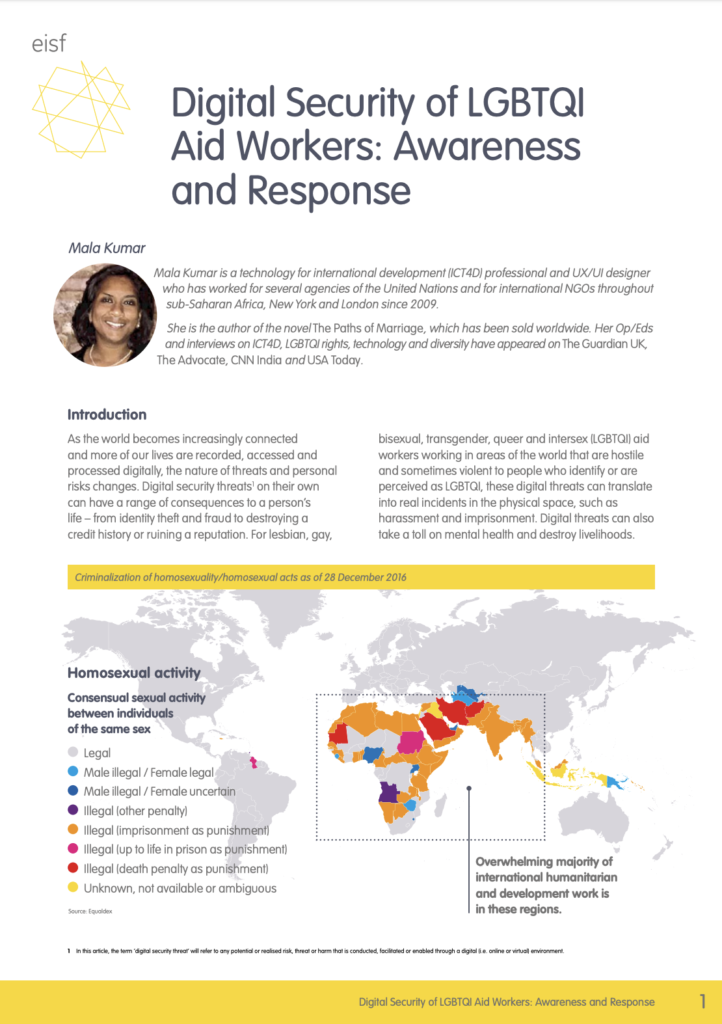As the world becomes increasingly connected and more of our lives are recorded, accessed and processed digitally, the nature of threats and personal risks changes. Digital security threats on their own can have a range of consequences to a person’s life – from identity theft and fraud to destroying a credit history or ruining a reputation.
For lesbian, gay, bisexual, transgender, queer and intersex (LGBTQI) aid workers working in areas of the world that are hostile and sometimes violent to people who identify or are perceived as LGBTQI, these digital threats can translate into real incidents in the physical space, such as harassment and imprisonment.
In this article, Mala Kumar (2017) discusses these digital threats and ways in which aid workers and non-governmental organisations can prepare and respond to them.
For up-to-date maps on sexual orientation laws (as seen in the article) please consult the ILGA Maps on Sexual Orientation Laws.
This article is a part of the Communications Technology and Security Risk Management project.
